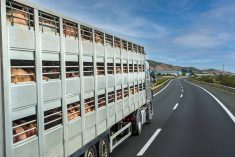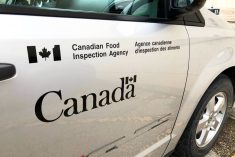The program that allows ranchers to defer taxable income on drought-induced sales of breeding livestock has rolled out an initial list of eligible areas for the 2010 tax year, starting in Alberta and British Columbia.
The federal government’s tax deferral program allows eligible producers in designated areas to defer income on the sale of breeding livestock for one year to help replenish breeding stock in the following year.
Proceeds from deferred sales are then included as income in the next tax year, when they may be at least partially offset by the cost of reacquiring breeding animals.
Read Also

U.S. livestock: ‘Cattle on feed’ report supports prices
Chicago cattle futures rose as the USDA’s ‘Cattle on Feed’ report showed inventories two per cent down from a year…
A breeding herd must have been reduced by at least 15 per cent for its owner to be eligible for a deferral of 30 per cent of income from net sales. In cases where a herd was reduced by over 30 per cent, 90 per cent of income from net sales can be deferred.
If a rancher’s home area is designated in two or more consecutive years, he or she can defer the sales income to the first year in which the area is no longer designated.
While much of the agricultural Prairies was hit with excess moisture in 2010, farming areas of northern Alberta and northern B.C. both saw “very dry conditions, well-below-normal temperature and low precipitation,” which led to “very poor” soil moisture and pasture and forage development, the government said.
In B.C., the designated census subdivisions announced Wednesday include Bulkley-Nechako B, C, D, E and F; Cariboo A, B, C, D, E, F, I, J and K; Fraser-Fort George A, C, D, E, F, G and H; and Peace River B, C, D and E.
In Alberta, meanwhile, the designated areas include the counties of Birch Hills, Clear Hills, Grande Prairie No. 1, Northern Sunrise, Saddle Hills, Woodlands and Yellowhead; the County of Northern Lights; Improvement District No. 12; and the municipal districts of Big Lakes, Fairview No. 136, Greenview No. 16, Peace No. 135, Smoky River No. 130 and Spirit River No. 133.
Preliminary designations announced so far were established based on spring moisture and summer rainfall, supplemented with estimates of forage yield, the government said Wednesday.
Final decisions and any needed adjustments will be made when all forage yield information is available, usually in December, but early designations for these eligible areas are expected to help producers make “informed decisions” about fall and winter livestock management, the government said.
As more data about forage yields are known, tax deferral areas could be expanded, the government added.















